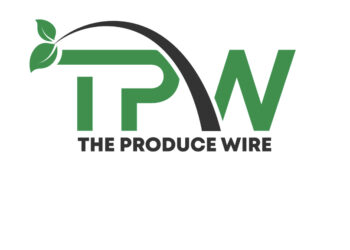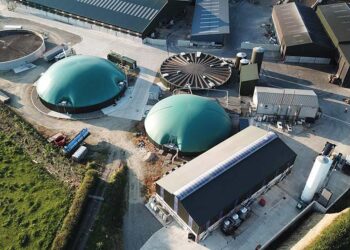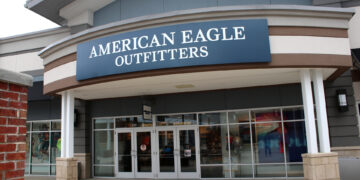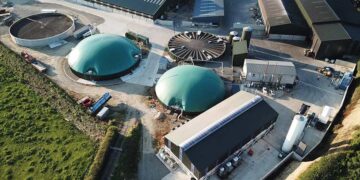By Aaron Geiger is the Managing Director of Manufacturing and CPG/Retail for ORTEC
As food distributors confront rising transportation costs, shifting customer expectations, and ongoing supply chain disruptions, optimizing final mile delivery has become crucial for maintaining a competitive edge. However, many distributors struggle to effectively implement artificial intelligence (AI) and software solutions, often due to a disconnect between C-level decision-makers and operational teams. This misalignment may lead to missed opportunities for true optimization and revenue increases.
Recent surveys reveal that over 52% of wholesale distributors rate their last-mile delivery planning effectiveness as below “excellent.” Additionally, nearly 40% of respondents adjust delivery routes multiple times daily due to unexpected delays, underscoring the urgent need for innovative solutions.
Understanding the role of software optimization
One major challenge in implementing AI and software solutions is the lack of a holistic view of food logistics. Many distributors focus on individual components, such as inventory management or last-mile delivery, without considering how these elements interact within the broader supply chain. This siloed approach often results in inefficiencies and missed optimization opportunities.
Data quality and integration also pose significant challenges. AI and machine learning algorithms rely on accurate, comprehensive data to generate meaningful insights. However, many distributors struggle with data silos and inconsistent formats, undermining the effectiveness of even the most sophisticated software solutions.
Dynamic routing for enhanced efficiency
Dynamic routing is another critical component of supply chain optimization. Many distributors still rely on static routing methods, which lack the agility required in today’s fast-paced environment. Dynamic routing continuously optimizes delivery routes based on real-time data, allowing for quick adjustments in response to unexpected events.
However, simply investing in dynamic routing software is insufficient. Distributors must refine their processes to fully leverage this technology. This involves analyzing current routing practices, identifying inefficiencies, and developing new strategies that utilize dynamic routing capabilities effectively.
The integration of AI and human expertise is vital for successful routing optimization. While AI can provide valuable insights, human judgment is necessary to interpret results and make strategic decisions. For example, adjusting delivery frequencies based on comprehensive cost-benefit analyses can lead to significant savings and improved efficiency.
The role of zone engineering and strategic routing
Zone engineering and strategic routing are essential components for food distributors aiming to enhance operational efficiency and improve service delivery. Zone engineering involves the systematic division of delivery areas into manageable segments, allowing distributors to optimize their routes based on geographic and customer demand factors. By analyzing data related to order frequency, delivery times, and customer locations, food distributors can create tailored routing strategies that minimize travel distances and reduce fuel costs. Strategic routing not only ensures timely deliveries but also enhances customer satisfaction by providing reliable service. Implementing these practices enables distributors to respond more effectively to fluctuations in demand, streamline their logistics operations, and ultimately drive profitability in a highly competitive market. By leveraging advanced analytics and technology, food distributors can refine their zone engineering and routing strategies, leading to more efficient operations and improved overall performance.
Transforming customer service
Optimization software is a game-changer for food distributors looking to enhance their customer service and increase their revenue. By leveraging advanced algorithms and real-time data analytics, this software enables distributors to streamline their operations, ensuring timely and accurate deliveries. With features such as dynamic routing, distributors can quickly adjust delivery schedules in response to unexpected changes, such as traffic delays or last-minute orders, thereby minimizing disruptions and improving reliability. Additionally, optimization software provides valuable insights into customer preferences and order patterns, allowing distributors to tailor their services to meet specific needs. This proactive approach not only boosts operational efficiency but also fosters stronger relationships with customers, as they experience consistent, high-quality service. Ultimately, by implementing optimization software, food distributors can elevate their customer service levels, leading to increased satisfaction and loyalty in a competitive market.
The key to successful optimization for food distributors lies in bridging the gap between C-level vision and operational realities. By implementing sophisticated upstream load optimization and embracing dynamic routing with a focus on continuous improvement, distributors can enhance efficiency, reduce costs, and improve customer satisfaction in an increasingly competitive marketplace. Adopting a holistic approach will enable food distributors to truly optimize their supply chains and thrive in the evolving landscape.
Aaron Geiger is the Managing Director of Manufacturing and CPG/Retail for ORTEC, a leading provider of advanced analytics and optimization solutions.














